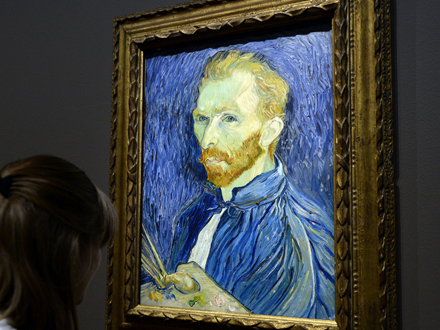
The true nature of Vincent van Gogh’s death continues to be a topic ripe for mystery – after a leading forensics expert has claimed that the artist was murdered.
在一位法医学专家声称画家文特森•梵高是被谋杀之后,梵高之死的真相继续成为了谜团解密的热门话题。
The Sunflowers painter died an agonising 29 hours after taking a bullet to the abdomen in a wheat field near Paris in 1890. On his death bed he apparently revealed he had shot himself.
1890年,这位向日葵画家在陷入持续苦闷的29小时之后,于巴黎近郊的麦田里朝腹部开枪自杀。临终时分在床上,他说是他朝自己开了枪。
However, Dr. Vincent Di Maio, an expert on gunshot injuries, has said that he be believes the wound was “not self-inflicted”.
然而,枪伤专家文特森•迪马尤博士认为这伤口“不是自己造成的”。
According to Vanity Fair, Di Maio, who was a key witness at the George Zimmerman trial, said that it was highly likely that Van Gogh “did not shoot himself”.
根据《名利场》杂志的说辞, 迪马尤——这位乔治齐默尔曼试验的关键目击者声称梵高很有可能“没有朝自己开枪”。
He made the claim in response to a request by Steven Naifeh and Gregory White Smith, whose biography of Van Gogh disputes the long-held suicide theory.
这是他对于史蒂芬•奈芬和乔治•怀特•史密斯请求的回应。奈芬和史密斯的梵高传记对于一直以来梵高自杀理论的主张提出了争议。
In Van Gogh: The Life, a 960-page book published in 2011, the Pulitzer Prize-winning authors claim that the artist had been shot, possibly accidentally, by a couple of boys and that he had decided to protect them by accepting the blame.
在2011年出版的960页的《梵高的一生》中,普利策的获奖作家们表示:这位画家很有可能是被两个男孩出于意外射杀的;为了保护他们,画家选择抗下责任。
American academic John Rewald had talked of hearing local rumours about such a theory in the 1930s.
在20世纪30年代,美国学者约翰•瓦尔德曾表示听过该理论的当地传闻。
But Naifeh and Smith were attacked for publishing their theory and in 2013 Louis van Tilborgh and Teio Meedendorp published a critical review in the Burlington Magazine, which reiterated the suicide narrative.
但是奈芬和史密斯这套理论的出版受到了攻击,且在2013年,路易斯•范蒂尔博赫和提奥•梅登多普在《伯灵顿》杂志中发表评论,重申了自杀论调。
上一篇:合作组织的英文怎么说